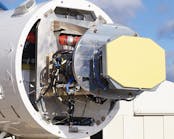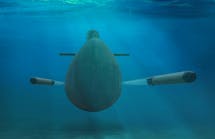Air Force asks industry for ideas on reinvigorating nuclear weapons command and control
ROME, N.Y. - U.S. Air Force researchers are reaching out to industry in a potential $8 million project to reinvigorate and expand how the service can command and control the nation's nuclear weapons forces.
Officials of the Air Force Research Laboratory's Information Directorate in Rome, N.Y., have issued a presolicitation for the Nuclear Command, Control, and Communications project, which seeks to incorporate new platforms and communications systems into the nation's nuclear weapons battle management.
Researchers are asking for industry's help in defining a new nuclear command, control, and communications architecture by defining what's possible in future nuclear battle-management technologies, including new ways to maintain communications during a nuclear war, as well as defining cyber security approaches to safeguard the nation's arsenal of nuclear weapons.
Air Force researchers are soliciting industry white papers on new ways advance the state of the art of the Air Force's nuclear command, control, and communications capabilities. Experts chiefly are interested in two technical areas: survivable and enduring beyond-line-of-sight communications; and modeling, simulation, and emulation of nuclear command and control architectures and systems.
Researchers are looking for industry ideas in areas such as network operation amid electromagnetic pulse (EMP) and nuclear scintillation; network monitoring and control in a nuclear environment; agile network radio control in nuclear- electronic warfare (EW)- and cyber warfare-contested environments; airborne communications in nuclear environments; real-time atmospheric sensing to enhance airborne communications; secure airborne transmissions that can resist nuclear scintillation and high-altitude EMP; and network connectivity and situation awareness to manage nuclear communications.
Other areas of interest involve modeling, simulation, and emulation of nuclear command and control architectures; nuclear command and control functions; survivable communications; and communication across several different frequency bands.
Air Force researchers expect to spend about $960,000 on this project in 2017, $1.8 million in 2018, $2.4 million in 2019, and $2.9 million in 2020.
Companies interested should e-mail white papers to the Air Force's Paul Gilgallon at [email protected]. The Air Force will accept white papers until 30 Sept. 2020.
For technical questions or concerns, contact Paul Gilgallon by e-mail at [email protected], or by phone at 315-330-4409. Direct contracting questions to Gail Marsh by e-mail at [email protected], or by phone at 315-330-7518.
More information is online at www.fbo.gov/spg/USAF/AFMC/AFRLRRS/BAA-AFRL-RIK-2016-0011/listing.html.

John Keller | Editor
John Keller is editor-in-chief of Military & Aerospace Electronics magazine, which provides extensive coverage and analysis of enabling electronic and optoelectronic technologies in military, space, and commercial aviation applications. A member of the Military & Aerospace Electronics staff since the magazine's founding in 1989, Mr. Keller took over as chief editor in 1995.



